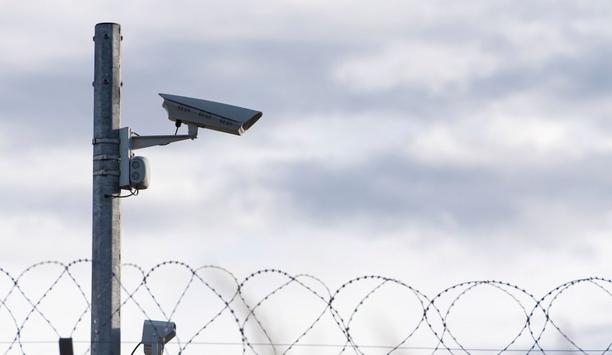First AID for the El Fresno Tunnel Getting to the beach is about to get a whole lot easier. A new highway, the A-63, is currently being built on the northern coast of Spain in the mountainous region of the Principality of Asturias. The road is intended to cut traveling time between the capital, Oviedo, and the coastal city of Canero. Just the section of the highway between the cities of Grado and Doriga alone will reduce an auto- mobilist’s journey by more than ten minutes.
Advancing at safe speeds
This decreased driving time is due in part to a 949 meter long tunnel, the El Fresno Tunnel, which comprises two tubes, one for each direction. Although the personal, economic, and environmental benefits of such an efficient tunnel are truly great, accidents in recent decades have shown us that tunnels do pose a much greater risk to motorists than ordinary roads.
The often cited Mont Blanc tunnel tragedy, for example, resulted in the incalculable cost of thirty-nine lives and the economic drawback of nearly 400 million Euros in tunnel repairs alone.
This and similar incidents have been enough to spur the European Union and nations alike to establish directives and laws regulating the safety measures to be taken in tunnels.
But taking a trip through the El Fresno Tunnel won’t ruin your trek up to the seashore; safety is certainly being accounted for in the construction of this extensive tunnel. Indra Sistemas S.A. (Indra), Spain’s leading information technology (IT) company, is heading up the implementation of all the electronic infrastructures in the El Fresno Tunnel, from fire alarms to ventilation and electricity. To ensure that calamity can be efficiently and effectively countered, Indra has designed a CCTV-based traffic management system for the El Fresno Tunnel that will use automatic incident detection (AID) equipment from Siqura, a leading global supplier of advanced video surveillance solutions.
Intelligent solutions
In the El Fresno Tunnel, Siqura will take AID technology a step further and debut its recently released Siqura TrafficServer™. The TrafficServer is the product of the rewarding partnership between Siqura and AID expert, Traficon. It is capable of readily discovering and exposing incidents, such as stopped vehicles, speed drops, fallen objects, and smoke. The TrafficServer can also carry out traffic monitoring tasks, for example, measuring lane speed and occupancy. Additionally, this intelligent video server supervises the overall health of the system, alerting operators in instances of image loss, camera movement, or communication errors. Since the TrafficServer can simultaneously encode and stream multiple formats, including H.264, MPEG-2, MPEG-4, and MJPEG, video data can be streamlined for specific purposes.
Siqura TrafficServer is capable of readily discovering and exposing incidents, such as stopped vehicles, speed drops, fallen objects, and smoke |
The entrances of the El Fresno Tunnel will be monitored by two Siqura Optelidome pan/tilt/ zoom (PTZ) IP cameras, and twenty-two fixed cameras will span the scope of the tunnel’s interior. Eighteen TrafficServers will be installed throughout the El Fresno Tunnel to analyze the video streams of these cameras.
Since the TrafficServer analyzes image data locally, it decreases processing power requirements. Such a decentralized system therefore reduces the number of computers needed throughout the tunnel that are necessary in more traditional, centralized AID systems, thus limiting the maintenance and powering costs of these consuming devices. Additionally, the TrafficServer merges the video with AID information before it transmits the video via single-mode optical fiber to a switch in the central control room.
The control room will be equipped with the Traficon Management System (TMS), a software platform that includes both a configuration client and server. The TMS enables tunnel personnel to draw up the incidents that the TrafficServers need to monitor. Incidents might include anything from pedestrians, stopped vehicles, wrong-way drivers, and lost cargo to queuing, speed drops, and even the presence of smoke. Furthermore, tunnel personnel can also specify scenarios in the TMS of possible situations that might occur in the El Fresno Tunnel, such as various maintenance projects or day and night lighting parameters. Armed with these scenarios, the TMS can discern between actual events and anodyne occurrences.
For example, the TrafficServers might be configured to notify the TMS if pedestrians are detected in the tunnel. The TrafficServers will then always alert the TMS if someone is walking around in the El Fresno Tunnel. If the TMS is using a normal, everyday scenario, it will trigger an alarm. However, if part of the tunnel is under maintenance, the TMS will use a different scenario. This maintenance scenario will allow the TMS to interpret the information from the TrafficServers as irrelevant if the so- called pedestrian happens to be a road worker.
Moreover, the TMS uses configured AID events to trigger a network video recorder (NVR), the Siqura i-NVR Compact, to save any relevant video clips to the system for future use. These recordings can be reviewed later to help improve the traffic monitoring system and hence the El Fresno Tunnel’s safety.
A swift but safe trip to the sea
By employing Siqura TrafficServers in the El Fresno Tunnel, Indra has not only cut costs but landed a powerful tool with which operators can instantly evaluate the severity of an incident and respond quickly and confidently. Consequently, the backbone of this traffic management solution ensures that travelers will arrive at their destinations, safe and sound. So, if you’re heading from Oviedo to the Atlantic coast next spring and you catch yourself giving the A-63 top marks for saving you so much time, remember that the progress made in traffic technology in the El Fresno Tunnel could save your life, let alone your time.












